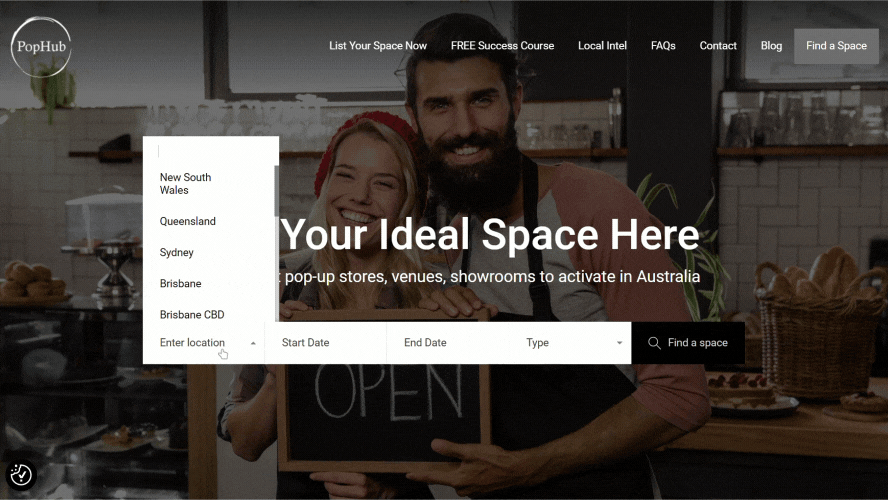
6 Pop-Up Shop Strategies and Marketing Tactics for Success
Make Every Moment Count – Strategies That Turn Short-Term Retail Into Lasting Impact
Pop-up shops are a valuable way for brands to create temporary retail experiences that generate excitement, drive sales, and connect with new customers. Whether you’re planning a one-day activation or a multi-month residency, the success of your pop-up depends on how well you prepare, promote, and engage.
In this post, we break down six key strategies to help you run a strong, results-driven pop-up shop — from choosing the right location to following up after the event ends.
1. Choose the Right Space
The space you select sets the tone for your entire pop-up. A well-located, easy-to-access venue can attract natural foot traffic and make marketing easier. High-visibility areas like shopping precincts, cultural hubs, or busy intersections give you the best chance to catch attention.
When choosing your space, consider:
Foot traffic and surrounding businesses
Accessibility and amenities
How well the space aligns with your brand look and feel
Invest time in planning how the storefront will appear from the outside. Clear signage, attractive displays, and lighting all play a role in drawing people in.
2. Work With Local Influencers
Influencers and local personalities can help expand your reach quickly. By partnering with individuals who have an engaged audience — particularly micro-influencers within your niche or suburb — you can build buzz in a more authentic and relatable way.
Think about:
Who your ideal customers already follow
What kind of content creators align with your brand values
What you can offer them in return — e.g., early access, product samples, or a creative setting to shoot content
Create a welcoming, well-styled space that encourages sharing and interaction. Influencer content not only promotes your event but can also boost brand awareness beyond the pop-up itself.
3. Align With Seasonal Moments
Tapping into seasonal events and holidays can increase urgency and excitement. Whether it’s Easter, summer school holidays, or Christmas, people are already looking for unique shopping or entertainment experiences.
Examples of seasonal strategies include:
Offering limited-edition products
Creating themed window displays or packaging
Timing your pop-up to coincide with local festivals, footy finals, or public holidays
These moments are especially effective for short runs — customers feel the pressure to “drop by before it’s gone.”
4. Make It Omnichannel
A pop-up shouldn’t exist in isolation. Use it as part of your wider brand ecosystem — integrating your in-store experience with your online presence.
Consider:
QR codes linking to product pages, social accounts, or exclusive online offers
Taking online pre-orders with in-store pickup
Offering in-store-only discounts to online followers
Allowing in-store purchases to be delivered later
The goal is to give your customers choice and convenience while building a unified brand experience.
5. Offer Multiple Payment Options
Make it easy for people to buy. Many customers expect seamless checkout experiences — especially at pop-ups, where they’re often browsing on the go.
To avoid losing sales, make sure you can accept:
Credit and debit cards
Tap and go/contactless
Mobile payment apps
Cash (optional, but still used by some)
Tools like Square and Afterpay offer affordable, easy-to-use options with minimal setup, ideal for temporary retail.
6. Extend the Impact Beyond the Event
Just because the physical shop is temporary doesn’t mean your brand interaction has to end when doors close.
Keep momentum going by:
Sharing photos, stories, and highlights from the event
Encouraging attendees to tag you in posts and use a custom hashtag
Sending a follow-up email or DM to say thank you
Tracking engagement and sales to review what worked well
Review analytics to guide your next move, whether it’s planning a second pop-up, refining your marketing, or following up with leads from the event.
Final Word
Pop-up shops can offer valuable insights, low-risk exposure, and real sales opportunities — but their success comes from good planning and strong execution. With the right mix of location, engagement, and marketing, your temporary space can create lasting connections.
Thinking of running a pop-up? Make sure you start with a clear strategy — and build in flexibility to adapt and learn as you go.

